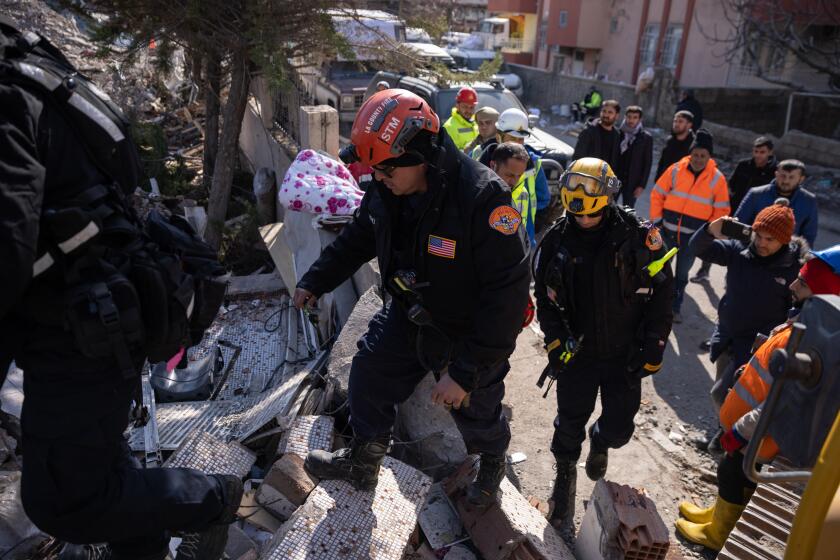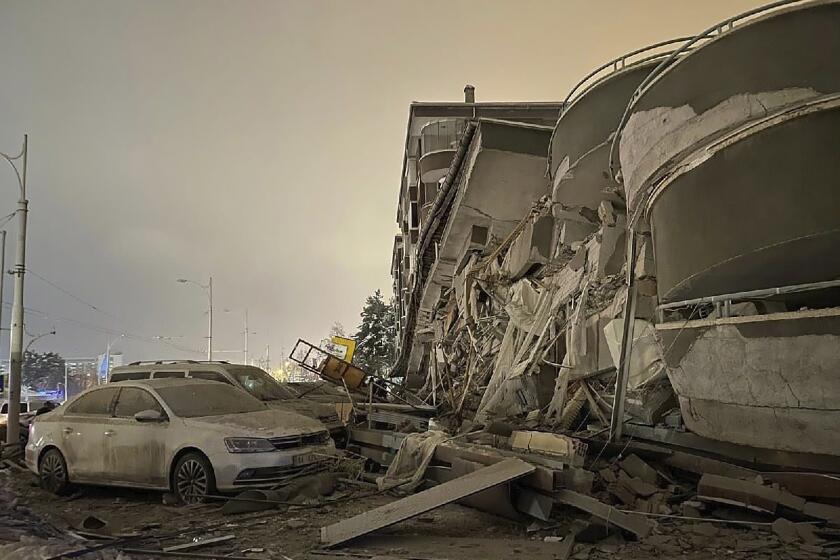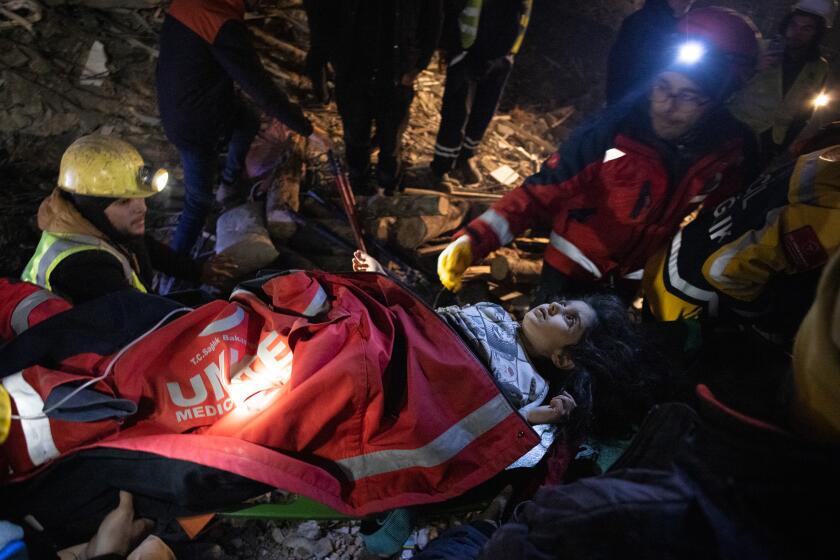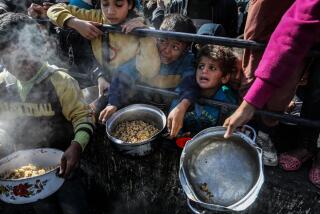Survivors are still being found in Turkey’s earthquake rubble. How long can that go on?
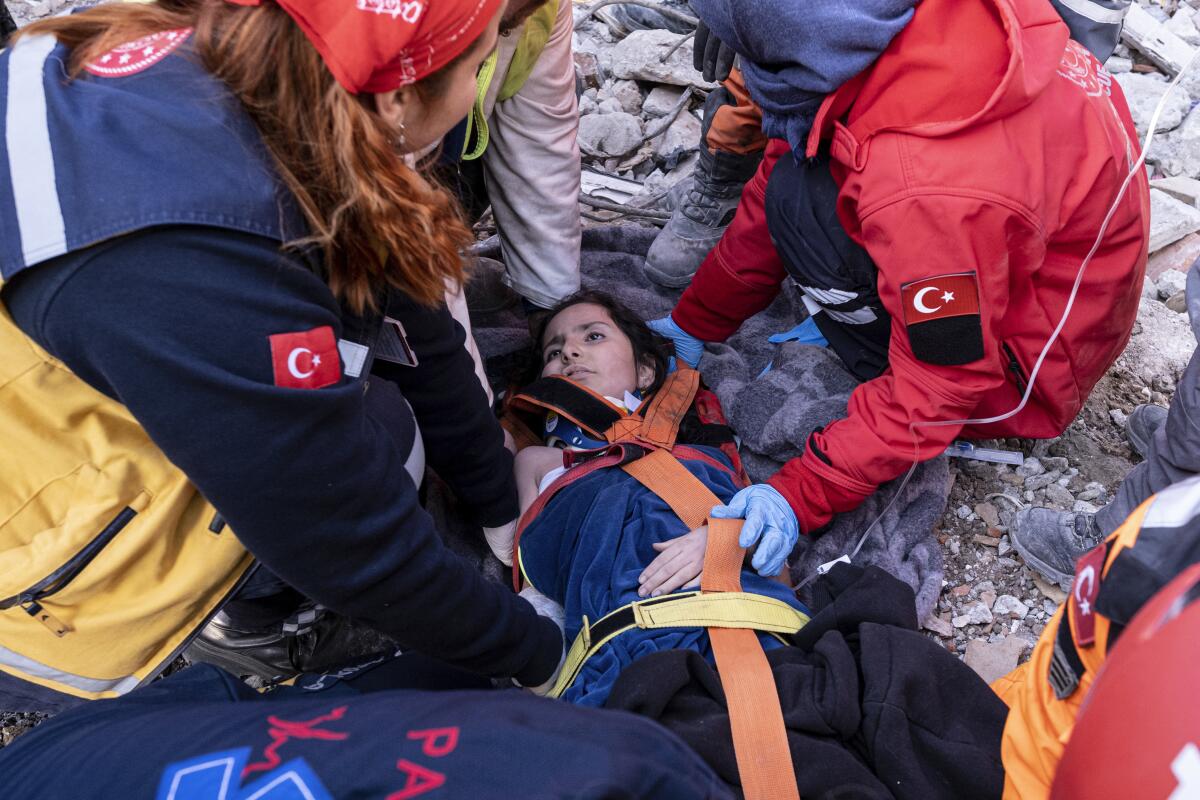
- Share via
In the earthquake-ravaged towns and cities of Turkey, the scenes are as inspiring as they are increasingly rare: survivors being pulled from the wreckage eight, nine, even 10 days after they were buried in rubble.
But their numbers are vanishingly small compared with a death toll that has surpassed 43,000 after a magnitude 7.8 earthquake struck southern Turkey and northern Syria on Feb. 6. On Friday, a 29-year-old mother of two was found alive, 258 hours after the temblor, in the remains of a building in Kahramanmaras, near the epicenter; two men were rescued from a collapsed hospital in Antakya.
How much longer is it realistic to hope that the living could still be among the recovered?
With luck and skill, there could be a few more miracles, experts say. But in a recovery effort that has already defied the odds, the window is nearly shut.
“This is unusual to have survivors this long,” said trauma surgeon Dr. Susan Briggs of Massachusetts General Hospital, who has raced to disaster zones for 37 years to treat survivors.
“After 72 hours, the chance of survival is not great,” Briggs said. “It’s unlikely you’re going to see survivors after two weeks.”
Still, “people surprise us all the time,” added Briggs, who in 1999 established and directed Mass General’s International Medical Surgical Response Team. In earthquakes in Armenia, Haiti and Iran, she recalled seeing people pulled alive from flattened buildings after improbable lengths of time. All had stories to tell of the small things that saved them.
Luck and resourcefulness on the part of victims, and skill and preparedness on the part of rescuers, will be critical factors in whether more survivors are found in Turkey and Syria, experts say. A victim’s age and health play a key role as well. And looming over all of this is Turkey’s ruthless winter cold.
Survivors often recount being entombed between walls or heavy structures that stayed intact. Having escaped crush injury, those trapped then find that good fortune and ingenuity often spell the difference between perishing and making it out alive.
A trickle of rainwater captured from an opening nearby helps prevent dehydration, which can kill in hours or days, depending on the temperature. Blankets or insulation material tugged from rooms or walls protect against hypothermia, which can cause death in hours.
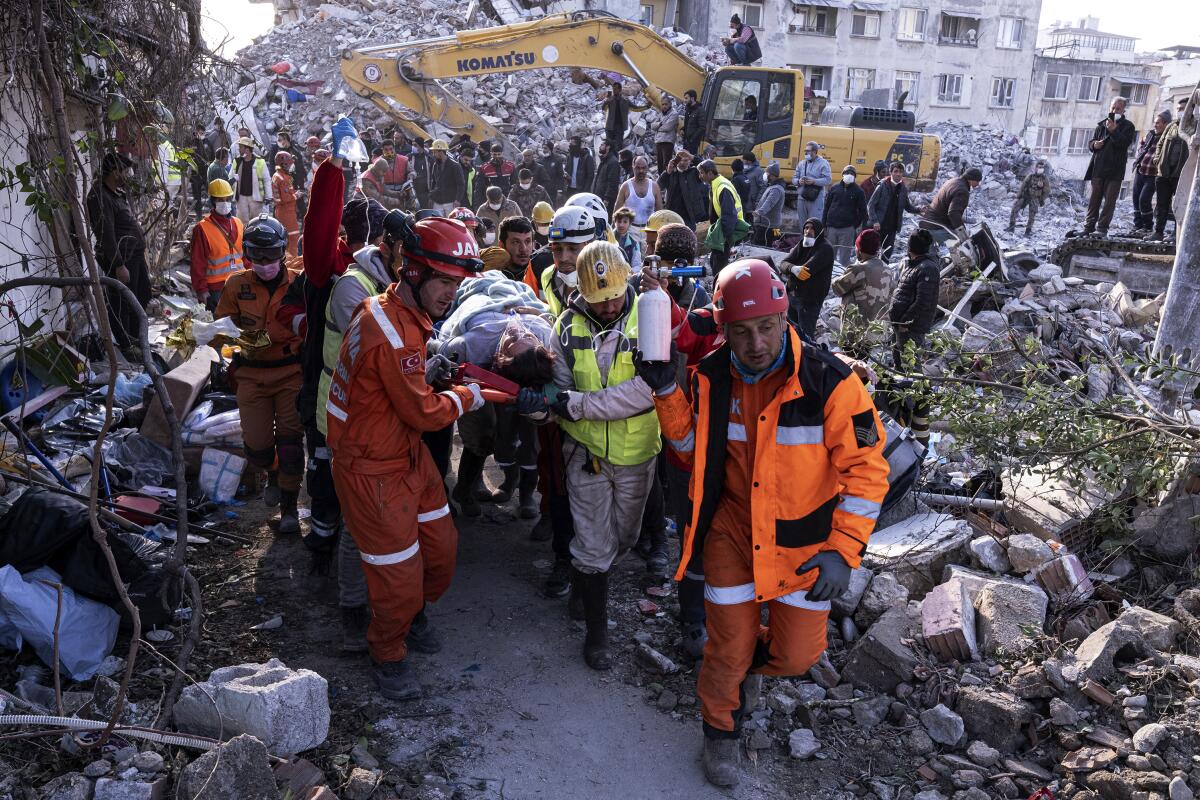
Emergency physician Dr. Scott Goldberg said a trapped victim can sometimes have provisions passed to them that make it possible to survive further delay.
Tapping is better than yelling to get rescuers’ attention, he said, because it both conserves energy and cuts more distinctively through the din of emergency workers and their machinery. Rescuers can then deliver water, food or blankets as a stopgap before freeing the person, said Goldberg, a member of Massachusetts Task Force 1, an urban search-and-rescue team dispatched to disasters by the Federal Emergency Management Agency.
At this point in Turkey and Syria, “I don’t think it’s hopeless,” Goldberg said. “But the prospects are getting pretty grim.”
Survivors who make it out of the rubble alive aren’t safe yet either. If rescuers don’t act to head off the consequences of so-called crush syndrome, a victim could be poisoned by a buildup of toxic proteins released by the muscle tissue of a pinned or mashed limb deprived of blood flow. Once blood from that limb begins to recirculate to other parts of the body, it can carry the poison to the kidneys and other organs, causing deadly damage even after a rescue.
In L.A. as in Turkey, builders are supposed to meet a “life safety” standard — structures that won’t collapse in a big earthquake. That doesn’t make those buildings resilient.
Before lifting weights off people, rescuers need to apply tourniquets to keep the poisoned blood from flowing to the rest of the body. When they can, rescue teams also try to start IV lines, often directly into bone (called intraosseous IV), to rehydrate a survivor and dilute the blood until the buildup of toxic proteins can be purged through dialysis.
Age matters, too, under most circumstances.
“A healthy 20-year-old is going to tolerate dehydration and harsh conditions longer than an unhealthy 80-year-old,” said USC trauma surgeon Dr. Kenji Inaba, who heads a team of USC specialists that deploys to disasters around the world. But a healthy young person who is spent and dehydrated after a tough workout may not have such a survival advantage over an older person who’s resting after dinner, Inaba said.
And in all people, there is what Inaba calls “the real intangible”: the will to survive. It’s impossible to measure, or to predict, how long it can extend survival in a disaster.
In the days since the magnitude 7.8 earthquake struck Turkey, search-and-rescue teams, including one from Los Angeles County, have been a ubiquitous presence.
“But any trauma surgeon would be lying if they did not in their heart of hearts believe in the will to survive as a powerful motivating factor,” Inaba said.
Indeed, while disaster medicine is a niche field in the medical profession, it is not a specialty guided by much research, said Dr. Thomas D. Kirsch, an emergency physician who teaches at George Washington Medical School.
“We can identify the risk factors for death more easily than we can identify the factors involved in surviving,” Kirsch said.
In the hours and days immediately after a disaster, the desperate efforts of loved ones, neighbors and local disaster crews are responsible for most rescues. By the time specialized search-and-rescue teams typically arrive on the scene of international disasters, he said, survival is mostly “just luck.”
Once those crews do arrive, Kirsch said, one factor seems to outweigh all others in raising the odds of getting a person out alive: the survival of friends or relatives who know where the person is trapped and who persistently demand the help of search-and-rescue crews to find them.
Kirsch said he has been on the receiving end of such anguished pleas.
In circumstances where resources are scant, needs are limitless and death is everywhere, “that is one awful experience,” he said, because such appeals often can’t be met or end with a grim discovery.
But some do end in joy. On Friday, as most search-and-rescue teams yielded to cleanup crews across Turkey, a police crew celebrated after finding a 12-year-old boy named Osman in the rubble of a building in Antakya.
The team’s elated leader, Okan Tosun, told the private news agency DHA that his squad had started feeling discouraged by the futility of their efforts.
“Just when our hopes were over, we reached our brother Osman at the 260th hour,” he said.
The Associated Press contributed to this report.
